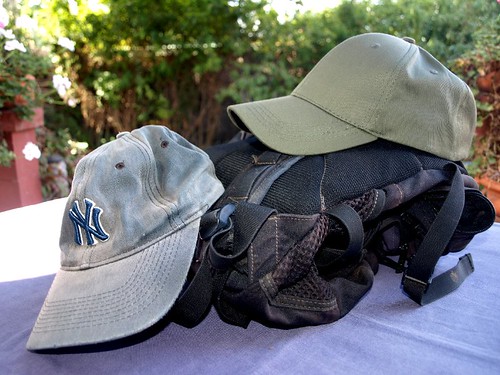I had no idea what to do. I squatted down and peered at the ground in front of me… nothing, not even the slightest suggestion of a path. I was a pine needle’s width away from putting my ear to the ground; not for any particular reason other than it looked good when Hawkeye did it in Last of the Mohicans and Aragorn in Lord of the Rings.
The forest stretched almost from horizon to horizon in front of us (well that’s what it seemed like), every inch of it looking exactly the same. Only
Mount Teide dominating the horizon to the right provided an indication that at least the general direction we were going was right.
The
Medio Ambiente had done it again. They’d sent us off into the wilderness with shiny new signs which kept us welcome company where the path was clear and which deserted us completely when it wasn’t. And now we were in danger of becoming lost forever… or a few hours anyway.
To be fair I can’t lay all the blame at their door. Although we were on a former official walking route, we had strayed from the new path that, for some strange reason, the Medio Ambiente now wanted us to follow.
We were in the hills above El Tanque with friends Richard, Nikki and
Basil of Tenerife Dogs fame. Basil was unperturbed by this turn of events, enjoying his frolic in the forest, whereas the rest of us stared at the expanse of forest in front with expressions which must have matched those of the 300 Spartans facing the Persian army at Thermopylae.
It had started out well enough with an easy stroll along a clear path through the pines from the recreation zone at Arenas Negras. The first alarm bells should have sounded when a signpost, which had pointed the way 18 months ago, didn’t appear where it should have done. Still, there was only one clear path and we followed it although it veered away from the way we were sure we wanted to go.
The signposts along it looked shiny and new; something which would normally be helpful. On Tenerife this isn’t always the case. Eventually we arrived at a path which circled the Chinyero Volcano, not the place we intended to be at all, and decided to retrace our steps and follow another new sign to San José. The route took us back in the right direction; however, within a few minutes the path became almost anonymous and there was a severe shortage of any helpful signposts whatsoever. A strategy of fanning out like a police line looking for a body helped get us back on track and we eventually joined up with a main path beside the impressive looking black and rust coloured cone at Arenas Negras.

We followed the ‘unofficial’, but more interesting, path around the volcano through a strange landscape of scattered pines, with perfect circles of tobacco coloured fallen pine needles at their base, and uneven lava formations. The path was easy to follow and the views of Mount Teide and the peaks of La Palma breaking the sea of clouds were breath stealers.
All was well with the world until we reached the point where the path completely disappeared.
I remembered similar happening the last time we walked this route, but this time I had an ace card. There was a small campsite of wooden chalets which was right above the end of our route and which should have become visible as we walked in a straight line from the end of the clear path… except this time there wasn’t.
We stared and stared at the forest, but there were no hints to the right direction, nothing… apart from the thinnest of straws. A flattish section of the forest up a slope to our right looked vaguely familiar and sort of like the spot where the chalets had been, but even as I climbed I knew that it was more in vain hope than anything else. Sure enough I reached the top and my hopes were dashed; there were no chalets. Unsure of what to do next I wandered a few feet to a ridge to think what I was going to tell the others…and there below me was the recreation zone where we’d started.
The relief was palpable and we were able to enjoy our bocadillo lunch at the comfort of a picnic table before heading to
Fleytas Bar for the most welcome of post walk beers to debate what had happened to the chalets.
This experience is exactly the reason we have written
walking routes on Tenerife and this particular route will be coming your way sometime in the near future – as soon as we can figure a way out to describe a path through a forest where everything looks exactly the same.














































